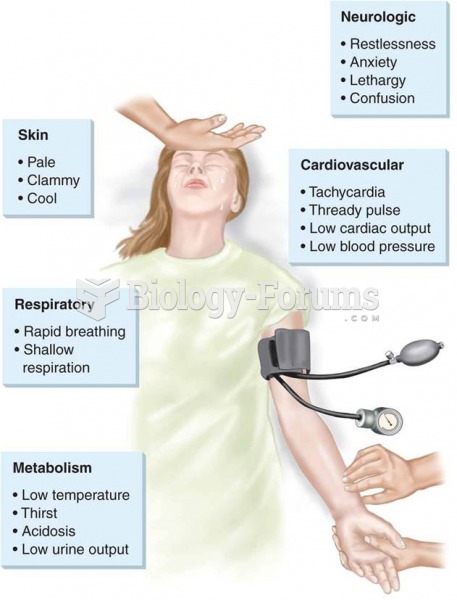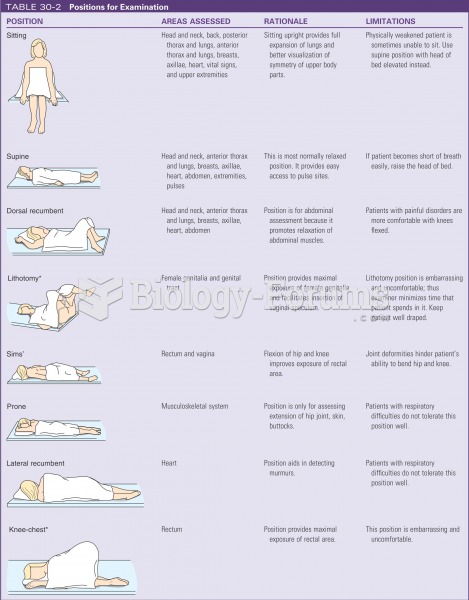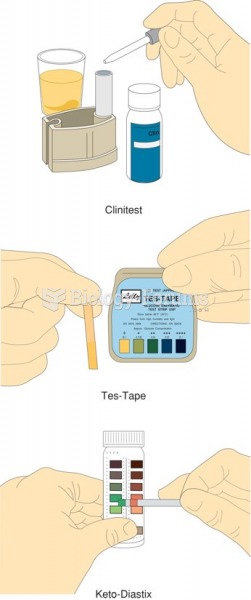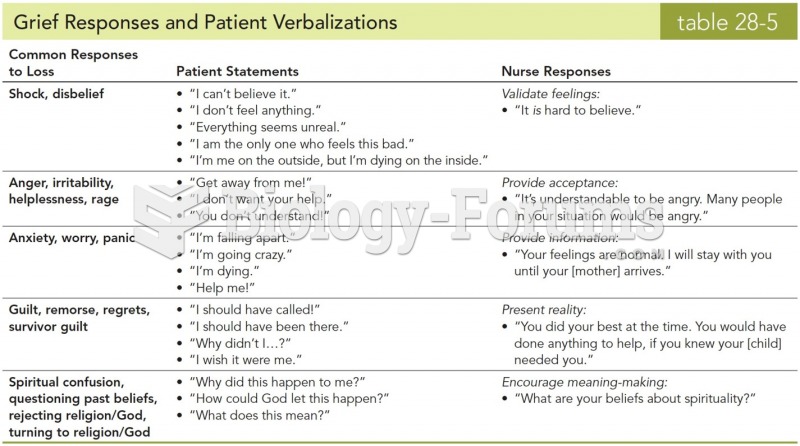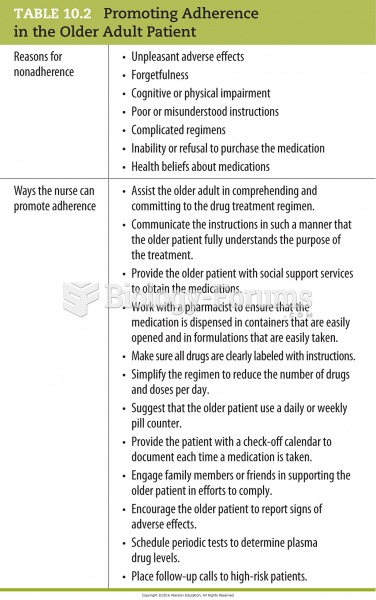Answer to Question 1
B
Feedback:
Because reabsorption of glucose by the tubule cells occurs at a fixed rate, this causes some accidental spilling of glucose into the urine during pregnancy. Lactose, which is being produced by the mammary glands but is not used during pregnancy, will also be spilled into the urine. If more than a trace amount of glucose is found in the pregnant patient's urine, this could indicate gestational diabetes. The increase of glucose in the urine is not because of eating excessive calories. The glomerular filtration rate increases in pregnancy.
Answer to Question 2
A, D, E
Feedback
Correct The nurse should plan to assess parent-child interactions when a child is
admitted for nonorganic failure to thrive. The observations should include
how the child is held and fed, how eye contact is initiated and maintained,
and the facial expressions of both the child and the caregiver during
interactions. Role modeling and teaching appropriate adult-child
interactions (including holding, touching, and feeding the child) will
facilitate appropriate parent-child relationships, enhance parents'
confidence in caring for their child, and facilitate expression by the parents
of realistic expectations based on the child's developmental needs. Daily
multivitamin supplements with minerals are often prescribed to ensure that
specific nutritional deficiencies do not occur in the course of rapid growth.
The nursing staff assigned to care for the child should be consistent.
Incorrect Providing a consistent caregiver from the nursing staff increases trust and
provides the child with an adult who anticipates his or her needs and who
is able to role model child care to the parent. Caloric enrichment of food is
essential, and formula may be concentrated in titrated amounts up to
24 calories per ounce. Greater concentrations can lead to diarrhea and
dehydration.


